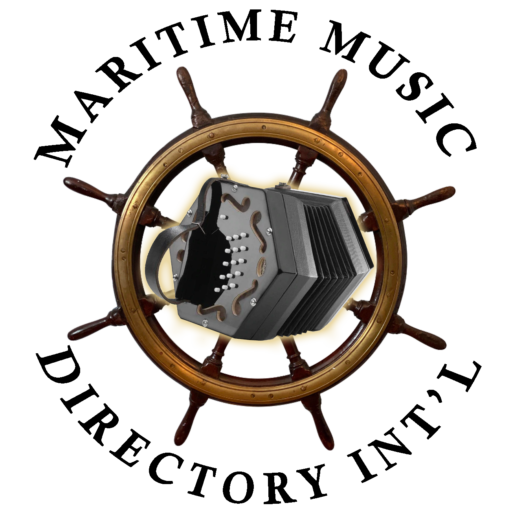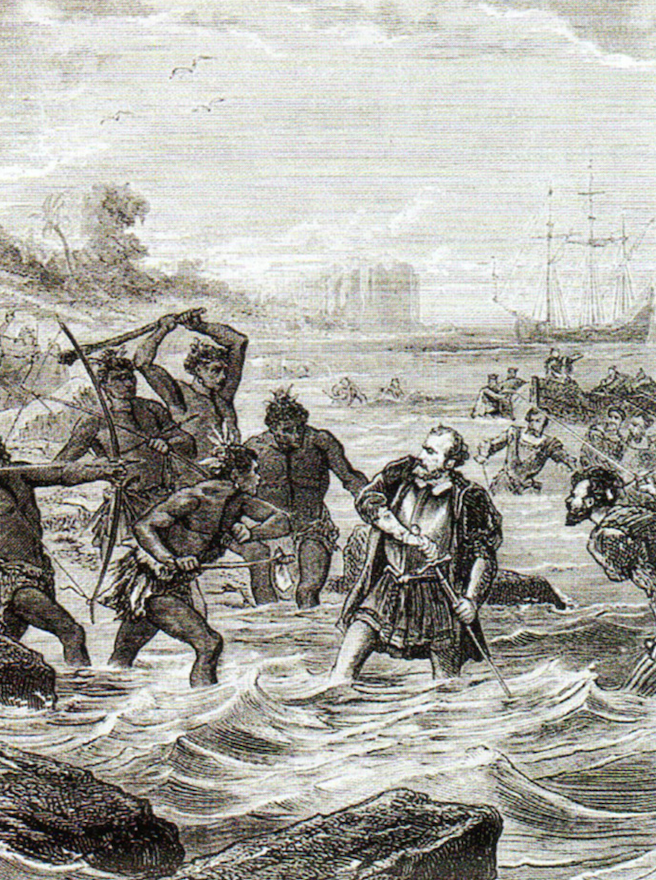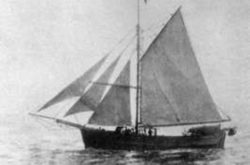John Quincy Adams begins arguments in Amistad case
On February 24, 1841, former President John Quincy Adams begins to argue the Amistad case in front of the U.S. Supreme Court.
A practicing lawyer and member of the House of Representatives, John Quincy . . .
Join a New Shanty Crew in Germany!
Here is an opportunity to join in a new shanty group with Folksinger Gunnar Wiegand!
Looking for singers for Shanty Crew
Hello everyone,
I live near Hameln . . .
King Charles II grants charter to Hudson’s Bay Company
May 2, 1670 – King Charles II of England grants a permanent . . .
Lady Elgin Sinks off Winnetka, Illinois (1860)
The loss of the side-wheel steamship Lady Elgin was one of Lake Michigan’s most tragic maritime disasters. On September 8, 1860, the ship, returning to Milwaukee from . . .
Lewis and Clark Depart 14 May 1804
One year after the United States doubled its territory with the Louisiana Purchase, the Lewis and Clark expedition leaves St. Louis, Missouri, on a mission to explore the . . .
Lewis and Clark depart to explore the Northwest
One year after the United States doubled its territory with the Louisiana Purchase, the Lewis and Clark expedition leaves St. Louis, Missouri, on a mission to explore the . . .
Magellan Reaches the Pacific Ocean
After sailing through the dangerous straits below South America that now bear his name, Portuguese navigator Ferdinand Magellan enters the Pacific Ocean with three ships, . . .
Magellan’s expedition circumnavigates globe
September 6, 1522 – One of Ferdinand Magellan’s five ships—the Victoria—arrives at Sanlúcar . . .
Mary Rose Sinks
Mary Rose Sinks (1545)
Several theories are thought to explain how and why Henry VIII’s flag ship sunk at the Battle of Solent.
Recovered in 1982 and is now on display in Portsmouth, UK.
Mary Rose was one of the largest ships in the English navy through more than three decades of intermittent war, and she was one of the earliest examples of a purpose-built sailing warship. She was armed with new types of heavy guns that could fire through the recently invented gun-ports. She was substantially rebuilt in 1536 and was also one of the earliest ships that could fire a broadside, although the line of battle tactics had not yet been developed. Several theories have sought to explain the demise of the Mary Rose, based on historical records, knowledge of 16th-century shipbuilding, and modern experiments. The precise cause of her sinking is subject to conflicting testimonies and a lack of conclusive evidence.
Mayflower arrives at Plymouth Harbor (18 December 1620)
The famous Mayflower story began in 1606, when a group of reform-minded Separatists in Nottinghamshire, England, founded their own church, separate from the state-sanctioned . . .
Mayflower Departs England (16 Sept. 1620)
The Mayflower sails from Plymouth, England, bound for the New World with 102 passengers. The ship was headed for Virginia, where the colonists–half religious dissenters and half entrepreneurs–had . . .
Mayflower docks at Plymouth Harbor (1620)
On December 18, 1620, the British ship Mayflower docked at modern-day Plymouth, Massachusetts, and its passengers prepared to begin their new settlement, Plymouth Colony.
The . . .
Mutiny on the Amistad
Mutiny on the Amistad slave ship (July 2, 1839)
Early in the morning of July 2, 1839, Africans on the Cuban schooner Amistad rise up against their captors, killing two crewmembers and seizing control of the ship, which had been transporting them to a life of slavery on a sugar plantation at Puerto Principe, Cuba.
Mutiny on the HMS Bounty (April 28, 1789)
Three weeks into a journey from Tahiti to the West Indies, the HMS Bounty is seized in a mutiny led by Fletcher Christian, the master’s mate. Captain William Bligh and . . .
Nelson Wins Battle of the Nile (1 August 1798)
On 1st August 1798, Nelson led his fleet into action against the French fleet anchored at the mouth of the Nile in Aboukir Bay, Egypt. In a fierce action, fought in the . . .
Nelson’s State Funeral (9 Jan 1806)
Vice-Admiral Horatio Nelson, 1st Viscount Nelson, was given a state funeral in London on 9 January 1806. It was the first to be held at St Paul’s Cathedral and was . . .
Norwegian ethnologist Thor Heyerdahl sails papyrus boat (1970)
On May 17, 1970, Norwegian ethnologist Thor Heyerdahl and a multinational crew set out from Morocco across the Atlantic Ocean in Ra II, a papyrus sailing craft modeled after . . .
Roald Amundsen becomes first explorer to reach the South Pole
On December 14, 1911, Norwegian Roald Amundsen becomes the first explorer to reach the South Pole, beating his British rival, Robert Falcon Scott.
Amundsen, born in Borge, . . .
Roald Amundsen becomes first explorer to reach the South Pole
On December 14, 1911, Norwegian Roald Amundsen becomes the first explorer to reach the South Pole, beating his British rival, Robert Falcon Scott.
Amundsen, born in Borge, . . .















